Small dogs have unique dietary needs. Creating meals at home can cater to these perfectly.
Tailoring homemade dog food recipes for small dogs ensures they get the right balance of nutrients and the proper portion sizes for their petite frames. These meals can promote their health and even prevent common ailments. Starting with natural ingredients, pet owners can craft delicious, nutritious meals that their furry friends will love.
Homemade dog food allows for complete control over what goes into each bite. It’s a way to avoid fillers and additives that often lurk in commercial pet foods. Plus, it’s a chance to bond with your pet through the care you take in preparing their meals. This blog post will explore simple, vet-approved recipes that keep your small dog happy and healthy. Read on to discover how easy and rewarding it is to cook for your canine companion.
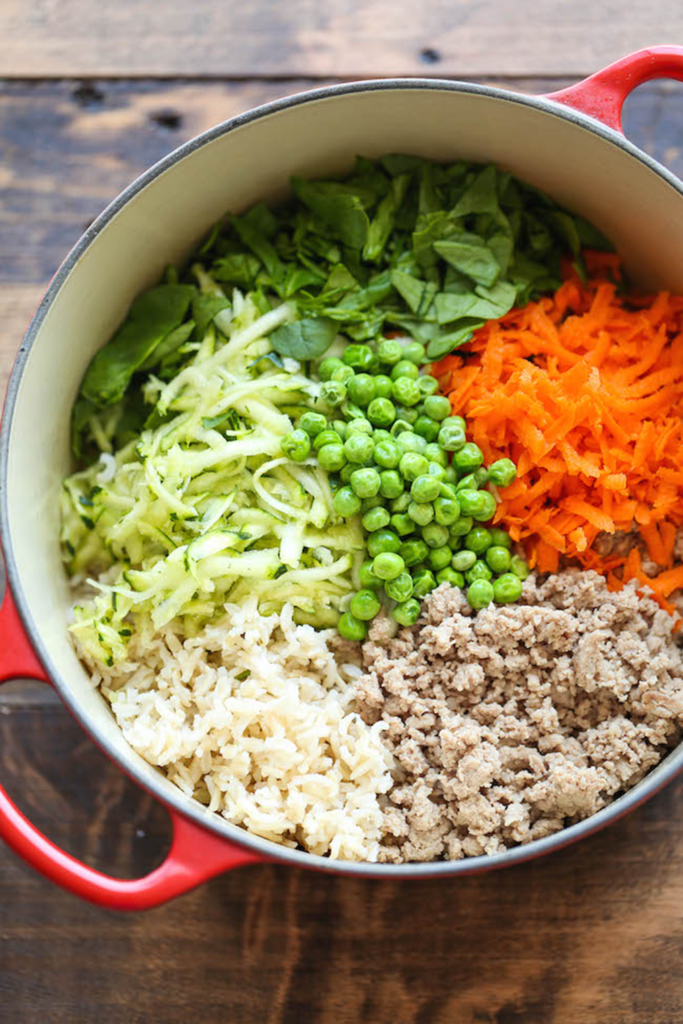
Credit: damndelicious.net
Introduction To Homemade Dog Food
Making dog food at home is a caring way to nourish your pet. It lets you pick fresh, healthy ingredients. You control what goes into each meal. This ensures your small dog gets the best nutrition.
Benefits Of Diy Meals
Home-cooked meals can boost your dog’s health. They offer balanced nutrients tailored to your pet. You avoid preservatives found in store-bought food. Homemade meals can also keep your dog’s weight in check. They can improve skin and coat health too.
Special Needs Of Small Dogs
Small dogs have unique dietary requirements. They need more calories per pound than larger breeds. Their small mouths and digestive systems need easy-to-chew and digest foods. Custom meals can meet these special needs. They can prevent common health issues in small breeds.
Balanced Diet Essentials
Crafting nutritious homemade meals for your small dog can boost their health and happiness. Essential balanced diet tips ensure your furry friend gets all the vitamins and minerals they need.
Creating homemade dog food for small dogs requires a balanced diet. This diet ensures they get all needed nutrients. Let’s break down the essentials.
Protein Sources
Small dogs need protein. It builds muscles and repairs tissues. Good sources include chicken, beef, and fish. Eggs and dairy can also add protein. Always cook meat well to avoid illness.
Vitamins And Minerals
Vitamins and minerals support health. Vegetables like carrots and peas are great. They provide vitamins A, C, and K. Fruits, such as blueberries, offer antioxidants. Remember, some foods are not safe for dogs. Always check before adding new items.
Carbohydrates And Fats
Carbs give energy. Rice and sweet potatoes are good options. They should be cooked and easy to digest. Fats are also important. They help keep the coat shiny. Use healthy fats like flaxseed oil or fish oil. But, use these in moderation. Each part of the diet supports your small dog’s health. Mix these elements for a balanced meal. Your dog will love it.
Chicken And Rice Delight
Chicken and Rice Delight is a nutritious homemade meal for small dogs. This simple recipe combines lean chicken and rice. It’s perfect for dogs with sensitive stomachs.
Ingredients Needed
- 1 cup cooked white rice
- 1/2 pound boneless chicken breast
- 1 tablespoon olive oil
- 1/4 cup chopped carrots
- 1/4 cup peas
Step-by-step Preparation
- Boil the chicken breast until fully cooked. Let it cool.
- Chop the chicken into small pieces suitable for your small dog.
- Cook the rice as instructed on the package. Ensure it’s soft.
- Steam carrots and peas until tender. This takes about 10 minutes.
- Mix the chicken, rice, and vegetables with olive oil in a large bowl.
- Let the mixture cool before serving to your dog.
- Store leftovers in the fridge for up to three days.
Always check with your vet before changing your dog’s diet. Enjoy feeding your pet this homemade treat!
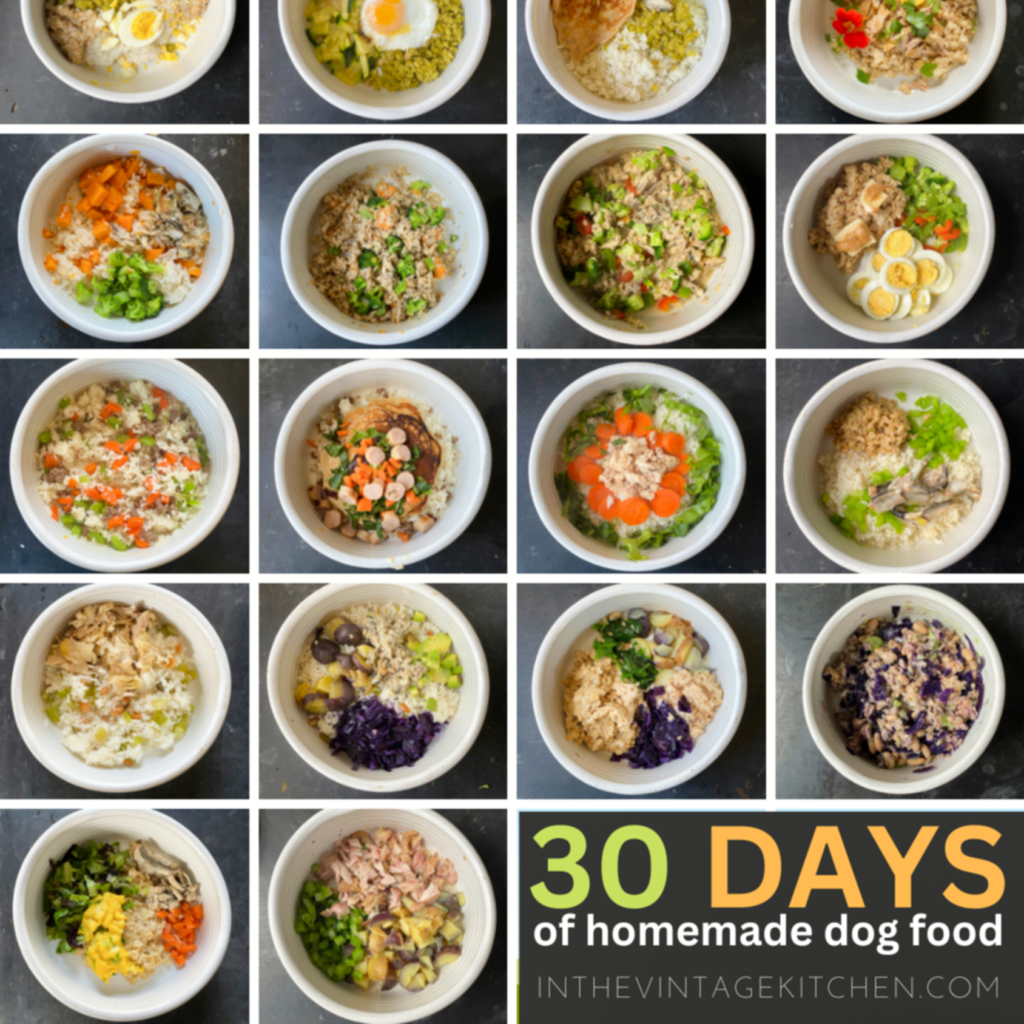
Credit: inthevintagekitchen.com
Beef And Veggie Mash
Beef and Veggie Mash is a nutritious homemade meal. Perfect for small dogs, it’s packed with protein and vegetables. This recipe keeps your furry friend healthy and happy. Let’s start with what you’ll need.
Shopping List
- Lean ground beef – a high-quality protein source
- Brown rice – for fiber and energy
- Carrots – rich in vitamins
- Peas – for minerals and vitamins
- Butternut squash – for beta-carotene
- Green beans – low-calorie, high in fiber
Cooking Instructions
- Boil rice – Cook until soft
- Brown beef – Cook thoroughly
- Chop veggies – Bite-sized pieces
- Steam vegetables – Until tender
- Mix all – Combine beef, rice, veggies
- Cool down – Safe to eat
- Store – Keep in fridge or freezer
For Beef and Veggie Mash, choose lean beef and fresh veggies. This dish is simple and nutritious. Follow the steps for a meal your dog will love.
Fish And Sweet Potato Feast
Treat your small dog to a homemade delight with our Fish and Sweet Potato Feast recipe. This nutritious meal is a simple mix of protein-rich fish and hearty sweet potatoes, perfect for your furry friend’s health and taste buds.
Sure, let’s dive into the delicious world of homemade dog food with a focus on the Fish and Sweet Potato Feast recipe, perfect for your small furry friend. This meal combines the nutritional benefits of fish and sweet potatoes in a simple, yet tasty, way.
Table of Contents
Selecting The Right Fish
Choosing the right fish is key. Go for lean fish like cod, tilapia, or salmon. They are rich in omega-3 fatty acids. These are good for your dog’s coat and skin. Avoid fish with high mercury levels like tuna. Always cook the fish well. Never feed raw fish to your dog.
Combining Ingredients
Mixing the right ingredients makes this dish a feast. Here’s how:
- Cook the sweet potatoes: Peel and boil until soft.
- Prepare the fish: Cook until it flakes easily. Let it cool.
- Mix them together: Combine fish, sweet potatoes, and a bit of olive oil.
This simple mix ensures your dog gets protein, vitamins, and good fats. Always let the food cool before serving. Store leftovers in the fridge. Remember, introducing new food should be gradual. Start with small portions. This helps avoid stomach upsets. Always consult your vet before changing your dog’s diet. This ensures the meal plan meets your dog’s nutritional needs.
Grain-free Options
Grain-Free Options for small dogs are gaining popularity among pet owners. Many choose these diets to avoid common allergens found in grains. They also hope to mimic a canine’s natural ancestral diet. Here’s why and how to make grain-free meals for your furry friend.
Why Go Grain-free?
Some dogs have grain allergies or sensitivities. Grain-free diets can lead to better digestion and more energy. These diets often have more protein and fewer carbs, too.
Recipes Without Grains
Creating grain-free meals for your small dog is simple. Use quality proteins, vegetables, and healthy fats. Here are some easy recipes to start with.
- Chicken and Sweet Potato: Boil chicken. Mash sweet potato. Mix together.
- Beef and Pumpkin: Cook ground beef. Stir in canned pumpkin. Cool before serving.
- Turkey and Green Beans: Cook turkey breast. Add chopped green beans. Blend for easy eating.
Measuring Portions
Every pet parent wants the best for their furry friend. Cooking homemade meals for small dogs can ensure they get the right nutrition. Yet, knowing how much to feed them is key. Let’s dive into how to measure the perfect portions.
Portion Sizes For Small Dogs
Small dogs have tiny tummies. This means they need less food than bigger dogs. A general rule is to give them 1/4 to 1/3 cup of food per meal. Always check the recipe’s suggested portion. Remember, a balanced diet keeps your small dog healthy and happy.
Adjusting For Activity Level
Not all small dogs are the same. Some are couch potatoes, while others are little balls of energy. Active dogs may need more food. Less active ones might need less. Watch your dog’s weight and adjust food portions as needed. This will help them stay fit and avoid weight issues.
Supplementing Homemade Meals
Making dog food at home is a great way to care for small dogs. Knowing when to add supplements is key. It helps keep them healthy. This section talks about adding the right extras to homemade meals.
When To Add Supplements
Not all homemade meals have everything a small dog needs. Sometimes, extra vitamins or minerals are necessary. Add supplements if the meal lacks certain nutrients. A vet can help decide what’s missing and needed.
Safe Supplements For Canine Health
Many supplements are safe for dogs. These include fish oil for a shiny coat and probiotics for a happy gut. Glucosamine supports joint health. Always choose supplements made for dogs. Check with a vet before starting any new supplement. This ensures safety and proper dosage.
Allergies And Food Sensitivities
Allergies and food sensitivities in small dogs can lead to discomfort and health issues. Tailoring a homemade diet ensures their well-being. This section explores how to identify allergens in your dog’s diet and craft meals that cater to their unique needs.
Identifying Allergens
Spotting the cause of your dog’s allergic reactions is vital. Common allergens include beef, dairy, wheat, and chicken. Signs of food allergies may include itchy skin, digestive upset, and chronic ear infections. Start by eliminating suspected allergens from their diet and monitor their response.
Creating Hypoallergenic Meals
Once allergens are identified, making hypoallergenic meals is the next step. Use simple ingredients like novel proteins and easily digestible carbs. Think lean meats such as venison or duck, and carbohydrates like sweet potatoes or peas. Always cook ingredients thoroughly and keep meal prep areas clean.
- Introduce one protein source at a time.
- Avoid complex mixes of ingredients.
- Consult with a vet for a balanced diet plan.
Transitioning To Homemade Food
Introducing homemade meals to your small dog can be a delightful change. It’s a step toward tailoring their nutrition to their specific needs. But it’s essential to switch from commercial food to homemade meals carefully. This ensures your dog’s system adjusts without issues.
Gradual Switch
Start by mixing a small amount of the homemade food with their current food. Gradually increase the homemade portion over a few weeks. This slow transition helps prevent digestive upsets. It gives your dog time to get used to the new flavors and textures.
Monitoring Your Dog’s Health
Keep an eye on your dog’s reaction to the new diet. Look for signs of improved energy and a shiny coat, which suggest the homemade food is working well. But also watch for negative changes. These could be allergies or digestion problems. If you see any issues, consult your vet immediately.
Storage And Safety Tips
Let’s talk about keeping homemade dog food fresh and safe. Proper storage helps meals last longer. Cleanliness avoids illness. Small dogs are sensitive, so let’s get this right.
Storing Meals
Proper storage is key for freshness. Here’s how:
- Refrigerate meals within two hours of cooking.
- Use airtight containers to keep food fresh.
- Label containers with dates. Use within 3-5 days.
For longer storage, freeze portions. Thaw in the fridge overnight.
Avoiding Contamination
Cleanliness is crucial. Follow these steps:
- Wash hands before and after handling dog food.
- Clean all surfaces and utensils with hot, soapy water.
- Avoid cross-contamination. Keep dog food separate from human food.
Remember, safety first for your furry friend’s health.
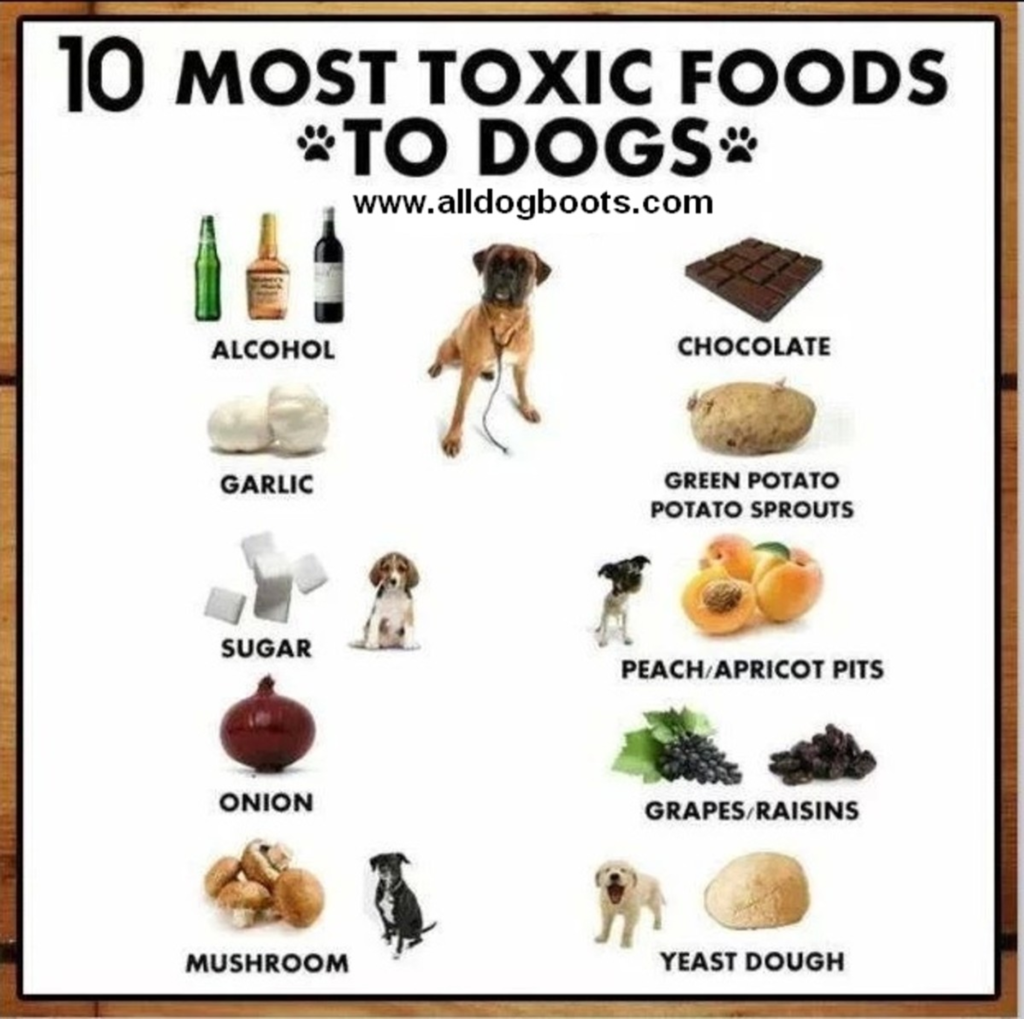
Credit: pethelpful.com
Faqs About Homemade Dog Food
Many pet owners consider homemade dog food for their furry friends. Small dogs have unique dietary needs. This section answers top questions about homemade dog food for small breeds.
Common Questions
Dog owners often wonder about the best food for their small dogs. They ask about ingredients, portion sizes, and benefits. Let’s tackle these common concerns with clear answers.
Expert Answers
Our experts provide insights based on research and experience. They help you understand the homemade dog food process. This ensures your small dog gets the nutrition it needs.
Frequently Asked Questions
What Are The Benefits Of Homemade Dog Food?
Homemade dog food can offer fresher ingredients and fewer preservatives compared to commercial foods. It allows for a tailored diet to meet your small dog’s specific nutritional needs and can help manage allergies or sensitivities.
How Do You Balance A Small Dog’s Diet?
A balanced diet for small dogs should include the right proportions of protein, carbohydrates, and fats. Consult a veterinarian to ensure inclusion of essential vitamins and minerals, and consider adding supplements if necessary.
Can Homemade Food Improve My Dog’s Health?
Switching to homemade food can improve your dog’s health by providing high-quality, easily digestible ingredients. It may result in better skin, a shinier coat, and more energy. Always consult with a vet to tailor the diet to your dog’s needs.
What Are Easy Homemade Dog Food Recipes?
Easy recipes often include a protein source like chicken or beef, a carbohydrate like rice or sweet potatoes, and vegetables like carrots or peas. Cook all ingredients and ensure they are properly cooled before serving.
Conclusion
Crafting nutritious meals for your small dog is both rewarding and simple. These homemade dog food recipes offer health benefits and are easy to make. Your furry friend will love the taste of fresh, wholesome ingredients. Remember, always consult your vet before changing your pet’s diet.
Treat your small dog to these delicious, homemade meals and watch them thrive. Tail wags and happy barks will show you’ve made the right choice. Ready to get started? Your small dog’s journey to better health begins in your kitchen!
Crafting the perfect homemade dog food requires knowledge and care. Your furry friend’s health depends on a balanced diet.
Imagine cooking a meal that ensures your dog’s tail wags with health and happiness. This is the power of mastering the homemade dog food ratio. A dog’s diet is crucial for its overall well-being. Just as humans need a balanced plate, dogs require the right mix of protein, fats, and carbohydrates.
The ideal homemade dog food ratio can seem like a mystery, but it’s essential for your pet’s nutrition. Over the next few paragraphs, we will delve into the art and science of creating the ultimate doggy dish. We’ll uncover the secrets to the perfect homemade dog food ratio, discuss how to balance nutrients effectively, and provide actionable advice for tailoring your homemade recipes to meet the needs of different breeds. Whether you’re a seasoned dog owner or new to the pet care game, understanding these ratios is key to a healthy, happy canine companion.
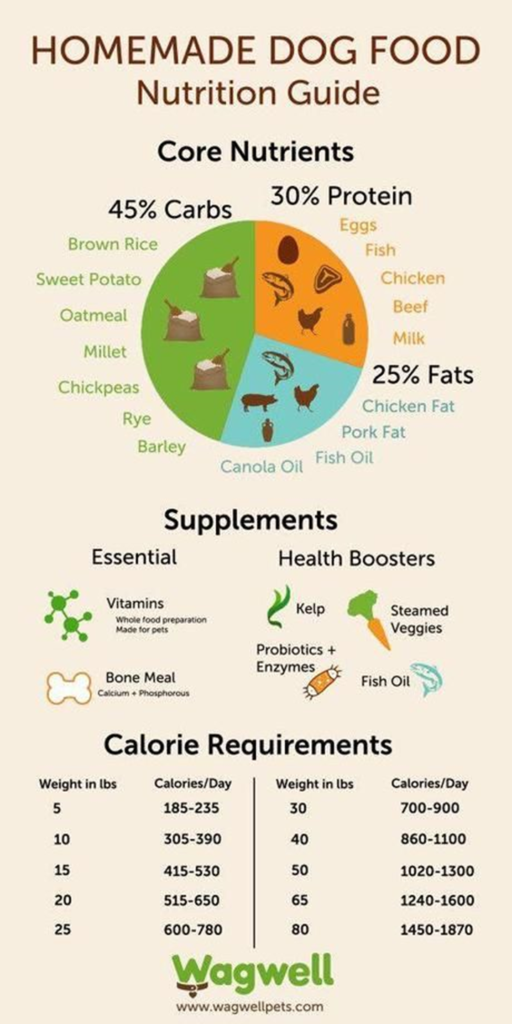
Credit: www.pinterest.com
Understanding The Perfect Homemade Dog Food Ratio
Creating balanced homemade dog food requires understanding the right mix of protein, vegetables, and grains. This ratio ensures your pet gets all the necessary nutrients for a healthy diet.
Creating the perfect homemade dog food can be a rewarding experience for both pet owners and their furry companions. Not only does it allow for complete control over the ingredients, but it also ensures that your dog is receiving the right balance of nutrients.
Crafting a balanced meal is like piecing together a puzzle where each component plays a crucial role in your dog’s overall health.
The Basics Of Dog Nutrition
Before diving into proportions, it’s essential to grasp the fundamental nutritional needs of dogs. These include proteins, carbohydrates, fats, vitamins, and minerals. They are the building blocks for a healthy canine diet. Dogs, like humans, require a well-rounded diet to thrive.
Ideal Protein Sources For Dogs
- Meat: This is the primary source of protein for dogs. It helps build and repair muscles and other tissues.
- Fish: A great alternative to meat, fish provides omega-3 fatty acids which are beneficial for a dog’s skin and coat.
- Eggs: These are an excellent supplementary protein, packed with essential amino acids.
Carbohydrates And Fiber: The Energy Providers
Carbs in a dog’s diet supply energy and come from vegetables and grains. Fiber is also a crucial part of their diet. It aids in digestion and helps keep the gut healthy. Sweet potatoes, brown rice, and pumpkin are excellent sources of both carbohydrates and fiber.
Fats: Essential But Moderately
Fats are a dense source of energy. They are vital for the absorption of certain vitamins and for providing essential fatty acids. Chicken fat and flaxseed are good options, but it’s important to get the balance right to avoid weight gain.
Vitamins And Minerals: The Micro-nutrient Balance
- Calcium and Phosphorus: These minerals support bone health and should be present in a 1:1 ratio.
- Vitamins: Dogs need a variety of vitamins, like A, D, E, and K. Vegetables and fruits can be good sources.
Creating The Perfect Homemade Dog Food Ratio
A general guideline is the 40/50/10 ratio:
- 40% Protein: This supports strong muscles and a healthy immune system.
- 50% Vegetables/Carbs: This provides energy and essential nutrients.
- 10% Fats: These are necessary but should be limited.
Each dog is unique, with different needs based on their age, size, and activity level. Tailoring the food to your dog’s specific requirements is key. It’s always best to consult with a veterinarian before making significant changes to your dog’s diet.
With the right balance, homemade dog food can contribute to a happy and healthy life for your pet.
What Is The Ideal Protein, Fat, And Carb Ratio For Dogs?
Crafting homemade dog food demands a balanced mix of protein, fat, and carbs. Typically, a healthy ratio includes 40% protein, 50% vegetables (for carbohydrates), and 10% fat. This blend supports your dog’s energy and health needs.
Deciding the best diet for your furry friend can be a tail-wagging challenge, but knowing the right balance of nutrients is key. When whipping up a batch of homemade dog food, it’s crucial to get the protein, fat, and carbohydrate mix just right for your dog’s health and happiness.
Let’s dig into what that ideal ratio looks like.
Ideal Protein Content For Dogs
Protein is the building block of a healthy canine diet. It supports muscle development and maintenance, immune function, and skin and hair health. The perfect portion of protein in homemade dog food should reflect:
- Adult Dogs: Typically, adult dogs thrive on a diet where protein comprises about 18-25% of their total dietary intake.
- Puppies and Active Dogs: These energetic pooches need more protein, around 28-30%, to support their growth and high activity levels.
Appropriate Fat Ratio For Canine Diets
Fat is a dense source of energy for dogs and is essential for absorbing vitamins and protecting internal organs. But too much fat can lead to weight gain. Here’s the scoop on fat:
- Moderation is Key: Aim for fats to make up about 10-15% of your dog’s diet.
- Omega Fatty Acids: Include sources of omega-3 and omega-6 fatty acids to support brain health and a shiny coat.
Carbohydrate Needs For Dogs
While dogs don’t require carbs to the same extent as humans, they can still be a beneficial part of a dog’s diet, providing fiber and energy. The ideal carb content should take into account:
- Fiber-Rich Carbs: Opt for complex carbohydrates like sweet potatoes and brown rice, which offer fiber and keep your dog feeling full.
- Energy Balance: Carbohydrates should fill out the remainder of your dog’s diet, usually around 40-70%, depending on their activity level and protein intake.
Remember, every dog is unique, and their nutritional needs can vary based on size, age, and health. It’s always wise to consult with a vet before making significant changes to your dog’s diet. A well-balanced meal is a stepping stone to a wagging tail and a vibrant, healthy life for your canine companion.
Homemade Dog Food Ratios: A Complete Guide
Discover the perfect balance for your pet’s meals with our complete guide to homemade dog food ratios. Learn the essentials of creating nutritious, balanced meals that will keep your furry friend healthy and happy.
Crafting the perfect homemade dog food can seem like a daunting task. Yet, with the right guidance, it becomes a breeze. Let’s dive into the essential ratios and tips to ensure your furry friend gets the best nutrition possible.
Understanding The Basics
Before you start mixing ingredients, it’s crucial to grasp the basics. A well-balanced homemade dog food should mirror their natural dietary needs. This means focusing on proteins, carbohydrates, fats, and vitamins.
Ideal Homemade Dog Food Ratios
Let’s break down the ratios needed for a nutritious meal:
- Protein (40%): Essential for muscle growth and repair. Think chicken, beef, or eggs.
- Vegetables (50%): Provides vitamins, minerals, and fiber. Good options include carrots, peas, and leafy greens.
- Carbs (10%): Supplies energy. Consider brown rice or sweet potatoes.
- Fats: Add in moderation. Sources like fish oil are great for their omega-3s.
Common Mistakes To Avoid
Creating your dog’s meal plan can be fun, but watch out for these pitfalls:
- Skipping variety: Dogs, like humans, need a mix of foods for complete nutrition.
- Overlooking supplements: Sometimes, homemade meals lack certain nutrients. A vet can recommend the right supplements.
- Ignoring specific needs: Each dog is unique. Age, health, and activity level can change dietary requirements.
Tips For A Smooth Transition
Switching to homemade food? Here’s how to make it seamless:
- Start slow: Mix homemade food with their current diet, gradually increasing the portion.
- Monitor health: Keep an eye on your dog’s energy, coat, and overall health to adjust the diet as needed.
- Consult a professional: A vet or a pet nutritionist can provide invaluable advice tailored to your dog’s needs.
Remember, patience and attention to detail are key. With these guidelines, you’re well on your way to providing a healthy, homemade diet for your dog.
Balancing Nutrients: The Best Ratio For Homemade Dog Food
Crafting homemade dog food requires a delicate balance of nutrients. The ideal mixture often includes a specific ratio of proteins, carbohydrates, and fats to support your pet’s health.
Crafting homemade dog food can be a rewarding way to cater to your pet’s nutritional needs. Getting the balance of nutrients correct is crucial for their overall health. Here’s how to do it right.
The Ideal Homemade Dog Food Ratio
A balanced homemade dog food diet should mimic what dogs would naturally eat in the wild. The best ratio to aim for generally includes:
- Protein: This is the cornerstone of a dog’s diet:
- Aim for about 40-50% of the diet to be protein.
- Good sources include cooked lean meats, eggs, and fish.
- Carbohydrates: Dogs need carbs for energy:
- Roughly 30-40% of their diet should be carbohydrates.
- Suitable options are sweet potatoes, brown rice, and vegetables.
- Fats: Essential for a healthy coat and skin:
- About 10-20% of the diet should come from fats.
- Use healthy fats like flaxseed oil or fish oil.
Adjusting The Ratio For Your Dog’s Needs
Not all dogs are the same, and neither are their dietary needs. Factors like age, activity level, and health conditions can affect the ideal food ratio. Consider these tips to adjust the homemade food ratio:
- Active dogs may need more protein and fats to sustain their energy levels.
- Older dogs often require fewer calories and might benefit from a lower fat intake.
- Dogs with specific health issues may need tailored diets, so consult your vet.
Nutrient-rich Ingredients To Include
Choosing the right ingredients is key to a nutrient-rich homemade diet. Here are some to consider:
- Lean meats: Provide high-quality protein.
- Organ meats: Loaded with vitamins and minerals.
- Vegetables: Offer fiber, vitamins, and minerals.
- Whole grains: A source of carbohydrates and fiber for digestion.
Remember, each dog is unique. Pay close attention to how your dog responds to the homemade diet and make adjustments as needed. If in doubt, always seek advice from a professional vet to ensure your furry friend is getting the nutrition they need.
How To Calculate The Right Homemade Dog Food Ratio
Determining the right homemade dog food ratio is essential for your pet’s health. Start by consulting a vet to understand your dog’s nutritional needs. Then balance proteins, carbohydrates, and fats based on their advice to ensure a complete and healthy diet.
Creating homemade dog food might seem tricky at first, but getting the right balance is key to your furry friend’s health. Let’s dive into how you can calculate the proper ratios to ensure your dog gets all the nutrients they need from their home-cooked meals.
Understanding The Basics Of Dog Nutrition
Before you start measuring and mixing, it’s essential to understand what goes into a balanced dog diet. Dogs require a combination of proteins, fats, and carbohydrates, along with essential vitamins and minerals. Proteins are the building blocks for your dog’s muscles and tissues, fats provide energy and support cell function, and carbohydrates offer fiber and additional energy.
The General Homemade Dog Food Ratio
- Protein sources (meat, seafood, dairy):
These should make up about 40-70% of the diet. Proteins support your dog’s growth and repair tissues.
- Fats (oils, fats in meats):
Aim for about 10-20%. They give your pup energy and keep their coat shiny.
- Carbohydrates (vegetables, grains):
These should be about 20-30% of the meal. Carbs are a great energy source and help with digestion.
Tailoring The Ratio To Your Dog’s Needs
Each dog is unique, and their dietary needs can vary based on age, weight, activity level, and health conditions. Here’s how to adjust the ratios:
- Active dogs:
They may need more protein and fats for energy and muscle repair.
- Older dogs or those with health issues:
Might require a diet lower in calories and fats but rich in high-quality protein.
Measuring Ingredients For Homemade Dog Food
- Use a kitchen scale:
A scale ensures you’re giving precise amounts of each component.
- Convert percentages to grams or ounces:
This makes it easier to measure your ingredients accurately.
Tips For Preparing Balanced Homemade Dog Food
- Consult your vet:
They can provide recommendations tailored to your dog’s specific dietary needs.
- Gradual changes:
Introduce new foods slowly to avoid upsetting your dog’s stomach.
By following these guidelines, you’ll be well on your way to crafting nutritious and delicious meals that will keep your dog healthy and happy. Remember, consistency is vital, and when in doubt, your vet is always there to help guide you.
Essential Ratios For Healthy Homemade Dog Food Recipes
Crafting homemade dog food? Knowing the right mix of proteins, carbs, and fats is key. This ratio ensures your furry friend gets all needed nutrients for a balanced diet.
Crafting homemade dog food is a wonderful way to ensure your furry friend gets all the nutrients they need. Let’s dive into the essential ratios for creating balanced and healthy meals for your dog.
The Ideal Protein, Fat, And Carb Mix
Every dog’s diet should have the right balance of protein, fat, and carbohydrates. This mix keeps them energetic and healthy. Here’s a simple guide to what each meal should contain:
- Protein: This should make up about 40% of your dog’s meal. It helps with muscle growth and repair.
- Fat: Aim for around 10% of the diet to be fat. It provides energy and helps keep their coat shiny.
- Carbohydrates: These should also constitute about 50% of the meal, giving your dog energy and supporting digestion.
Key Vitamins And Minerals
Just like humans, dogs need a variety of vitamins and minerals in their diet. Here’s a brief overview of the crucial ones:
- Calcium: Essential for strong bones and teeth. Add ground eggshells or a calcium supplement.
- Vitamin E: Supports healthy skin and eyes. Include foods like spinach and eggs.
- Omega-3 fatty acids: Great for the coat and brain health. Fish or flaxseed oil are excellent sources.
Understanding these ratios and nutrients will help you prepare meals that keep your dog happy, healthy, and full of energy. Remember, each dog is unique, so it’s a good idea to adjust these guidelines to fit your pet’s specific needs.
The Science Behind Homemade Dog Food Ratios
Crafting nutritious homemade dog food demands a precise balance of proteins, fats, and carbohydrates. Understanding the proper ratios ensures your pet’s health and vitality through a well-rounded diet.
Crafting homemade dog food can seem like a culinary puzzle, with each piece needing to fit perfectly for your furry friend’s health. Understanding the science behind dog food ratios is like finding that corner piece of the puzzle – it sets the foundation for everything else.
The Importance Of Balanced Nutrition
Dogs require a balanced diet that includes the right proportions of proteins, fats, and carbohydrates, along with essential vitamins and minerals. Just like humans, dogs need these nutrients to function properly:
- Proteins: These are the building blocks for a healthy body. They help with muscle repair and growth.
- Fats: Fats provide energy. They also help keep your dog’s skin and coat healthy.
- Carbohydrates: While not as crucial as proteins and fats, they supply fiber and energy.
- Vitamins and Minerals: These are necessary for the immune system and bone health.
How To Calculate Proper Ratios
To ensure your dog gets the necessary nutrients, you need to understand how to calculate the right ratios of each food group. Here’s a simple breakdown:
- Protein sources should make up about 40-70% of the diet: This can include meats like chicken, beef, or lamb.
- Fats are typically included at around 10-20%: Good sources are chicken fat or fish oil.
- Carbohydrates may fill the remaining 10-50%: These include vegetables and grains like rice or oats.
- Vitamins and minerals: These should be added according to your dog’s specific needs, often through supplements or by including various fruits and vegetables.
Adjusting Ratios For Your Dog’s Needs
Every dog is unique and may require adjustments to these general ratios. Factors like age, weight, and activity level play a role:
- Active dogs might need more protein and fat for energy.
- Older dogs may benefit from less fat in their diet to maintain a healthy weight.
- Puppies require more protein and fat for growth and development.
The Role Of Water In Homemade Dog Food
Never forget water. It’s not part of the food ratio, but it’s essential. Water aids digestion and helps regulate body temperature. Always ensure your dog has access to fresh, clean water.
Potential Risks Of Imbalanced Homemade Diets
Creating an imbalanced diet can lead to health issues for your dog:
- Too much protein can strain the kidneys.
- Excess fat might lead to obesity.
- Not enough calcium can cause bone problems.
Balance is key. Remember, your dog’s health depends on a proper diet, just as much as love and exercise.
Achieving Optimal Nutrition With The Right Dog Food Ratio
Crafting balanced homemade dog food requires precise ratios. Tailor your pooch’s meals with the right mix of protein, vegetables, and grains for peak health.
Crafting homemade dog food can be a fulfilling way to cater to your pet’s nutritional needs. By understanding the ideal proportions of proteins, carbohydrates, and fats, you can ensure your furry friend receives a well-balanced diet. Let’s dive into how to strike the right balance for your dog’s homemade meals.
The Basic Dog Food Ratio
When preparing meals for your dog, aim for a mix of:
- Protein sources:
- Chicken, beef, or lamb are excellent choices for muscle development and energy.
- Carbohydrates:
- Brown rice or sweet potatoes provide the necessary fuel for an active lifestyle.
- Fats:
- Include sources like fish oil or flaxseed to support healthy skin and coat.
This combination aids in delivering a comprehensive diet that supports overall health.
Tailoring To Your Dog’s Needs
Each dog is unique, and dietary requirements can vary based on:
- Age:
- Puppies need more protein for growth, while seniors require less to maintain weight.
- Activity level:
- Active dogs may benefit from additional carbs for energy.
- Health conditions:
- Dogs with specific health issues may need adjustments to their diet for optimal care.
Consulting a vet can guide you to customize the diet appropriately.
The Importance Of Measuring Ingredients
Precision is key:
- Use a kitchen scale or measuring cups to portion ingredients accurately.
- This ensures your dog gets the right amount of nutrients without overfeeding or underfeeding.
Supplements: Are They Necessary?
In some cases, supplements can fill nutritional gaps:
- Omega-3 fatty acids:
- They support joint health and cognitive function.
- Probiotics:
- These can aid in digestion and gut health.
- Vitamins and minerals:
- A multivitamin may be recommended to cover any missing nutrients.
Always consult with your vet before adding supplements to your dog’s diet.
Preparing Homemade Dog Food Safely
Safety is paramount in food preparation:
- Cook all meat thoroughly to prevent the risk of foodborne illnesses.
- Avoid ingredients that are toxic to dogs, such as onions, garlic, and chocolate.
- Store food properly to maintain freshness and prevent spoilage.
By following these guidelines, you’ll not only keep your dog healthy but also create a stronger bond as you cater to their well-being through nutritious, homemade meals.
Homemade Dog Food: Recommended Ratios For Every Breed
Creating the right homemade dog food ratio is key for your pet’s health. Each breed has unique needs. Learn the recommended mix for your furry friend.
Crafting the perfect homemade dog food for your furry friend might sound like a daunting task. Yet, it’s quite doable with the right knowledge. Each breed has its unique needs, but there are general guidelines that can help you get started.
Let’s dive into the recommended ratios for making homemade dog food that keeps your pet happy and healthy.
Protein: The Building Block
Proteins are crucial in your dog’s diet, acting as the building blocks for healthy muscles and tissues. For most breeds, proteins should make up about:
- 40-50% of the diet: This ensures they’re getting enough amino acids to support muscle repair and growth.
- Choose lean meats: Chicken, turkey, and fish are excellent sources.
- Remember to cook: Cooking the meat makes it easier for your dog to digest.
Variety is key. Mixing different protein sources can provide a wider range of nutrients.
Carbohydrates And Fiber: Energy And Digestion
Carbs give your dog energy, while fiber helps with digestion. For a balanced diet, consider these points:
- 30-40% of the diet should be carbohydrates: This provides a good energy source.
- Sources of good carbs and fiber: Brown rice, sweet potatoes, and oats are great options. They’re not just filler; they provide energy and help keep the digestive system running smoothly.
This ratio keeps their energy levels up and supports a healthy gut.
Fats: Essential Fatty Acids
Fats are not the enemy. In fact, they’re essential for your dog’s diet, but in moderation.
- 10-20% of the diet: This is enough to give them the necessary fatty acids without risking obesity.
- Good sources include: Fish oil, flaxseed, and chicken fat. These help with skin and coat health, among other benefits.
Fatty acids keep their coat shiny and support overall health.
Vitamins And Minerals: The Micronutrients
Though they’re needed in smaller amounts, vitamins and minerals are vital for a well-rounded diet. They support everything from bone health to nerve function. Here’s how to include them:
- Use a variety of vegetables and fruits: Carrots, apples, and leafy greens are packed with these nutrients.
- Consider supplements: Sometimes, it’s hard to get everything from food alone. A vet can recommend safe supplements.
Balancing these micronutrients is key to preventing deficiencies and ensuring your dog thrives.
Water: The Essence Of Life
Never forget, water is crucial. Always make sure your dog has access to fresh, clean water. It helps with digestion, nutrient absorption, and temperature regulation. A well-hydrated pup is a happy pup.
By following these ratios, you’re on your way to providing a nutritious, homemade meal that caters to the needs of most dog breeds. Remember, each dog is unique. It’s always a good idea to consult with a vet to tailor the diet to your dog’s specific needs.
Happy cooking!
Customize Your Homemade Dog Food With The Right Nutrient Balance
Creating homemade dog food? Balance is key. Aim for a mix of protein, veggies, and grains to meet your furry friend’s needs.
Creating a balanced homemade dog food diet is essential for your furry friend’s health and happiness. Tailoring meals to meet your dog’s specific nutritional requirements can seem daunting, but with the right knowledge, it’s quite manageable. Let’s dive into how you can customize your dog’s diet for optimal health.
The Basics Of Dog Nutrition
Dogs need a blend of proteins, carbohydrates, fats, vitamins, and minerals to thrive. A general guideline to follow is the 40:50:10 ratio:
- Protein: 40% of the diet
- Essential for growth and repair of tissues.
- Sources include meat, eggs, and dairy.
- Carbohydrates: 50% of the diet
- Provides energy for your pooch.
- Includes vegetables, grains, and fruits.
- Fats: 10% of the diet
- Supports cell function and promotes healthy skin.
- Found in oils and some meats.
Adjusting Ratios For Your Dog’s Life Stage
The nutritional needs of dogs change as they age. Puppies, adults, and seniors all require different approaches to their diets.
- Puppies:
- Growing bodies need more protein and fat.
- They might require twice the energy intake of adult dogs.
- Adult Dogs:
- Stable ratios maintain health and energy.
- Monitor weight to adjust portions if needed.
- Senior Dogs:
- Often need fewer calories.
- May benefit from a higher fiber content to aid digestion.
Common Health Concerns And Diet Adjustments
Some dogs have special dietary needs due to health issues. Customizing their food ratios can help manage these conditions.
- Obesity:
- Less fat and carbohydrates can help manage weight.
- Increased protein maintains muscle mass while dieting.
- Diabetes:
- Consistent carbohydrate levels at each meal regulate blood sugar.
- Fiber-rich foods slow glucose absorption.
- Allergies:
- Identify and eliminate allergenic proteins.
- Substitute with hypoallergenic options like fish or novel proteins.
Tips For Preparing Balanced Homemade Meals
Crafting your dog’s meal from scratch gives you control over what they eat. Keep these tips in mind to ensure they get all their nutrients:
- Variety is key:
- Rotate ingredients to cover a broad spectrum of nutrients.
- Different protein sources, vegetables, and grains can prevent deficiencies.
- Supplements:
- Some nutrients are hard to get from food alone.
- Consult your vet about adding supplements like calcium or omega-3 fatty acids.
Sample Homemade Dog Food Recipe
A simple recipe to get started could look like this:
- Ingredients:
- 2.5 cups cooked lean ground turkey
- 1.5 cups brown rice
- 1 cup chopped carrots
- 1 cup peas
- 1 tablespoon fish oil
- Preparation:
- Cook the rice and vegetables until soft.
- Mix all ingredients together and let cool before serving.
Remember, always consult with your vet before making changes to your dog’s diet. They can provide guidance tailored to your dog’s individual needs. With care and attention, your homemade dog food will keep your canine companion healthy and satisfied.

Credit: www.knowbetterpetfood.com
Frequently Asked Questions
What Is The Best Homemade Dog Food Ratio?
The best homemade dog food ratio typically consists of 40% protein, 50% vegetables, and 10% carbohydrates. Tailoring the ratio to your dog’s specific needs and consulting with a vet can ensure optimal health.
How To Balance Nutrients In Homemade Dog Food?
To balance nutrients in homemade dog food, aim for a blend of protein, fats, and carbohydrates, along with essential vitamins and minerals. A common guideline is 40% protein, 50% vegetables, and 10% carbs.
Can Homemade Dog Food Meet All My Dog’s Nutritional Needs?
Yes, homemade dog food can meet your dog’s nutritional needs when prepared with the right balance of protein, fats, carbs, and essential nutrients. Consultation with a veterinarian can help ensure completeness.
What Protein, Fat, And Carb Ratio Is Ideal For Dogs?
The ideal ratio for homemade dog food is generally 40% protein, 50% vegetables (for vitamins and minerals), and 10% carbohydrates. This may vary based on your dog’s age, weight, and activity level.
Conclusion
Crafting the right balance in your homemade dog food is key. It ensures your furry friend gets all the nutrients they need. Think of it like a puzzle. The right pieces must fit together for a complete nutritional picture. Your dog’s health depends on this balance.
Protein, fats, and carbs must be in harmony. Remember, not all breeds have the same needs. Tailor your dog’s diet to their unique requirements. Take what you’ve learned here about ratios and apply it with care. Your dog’s wagging tail will be your best thanks!

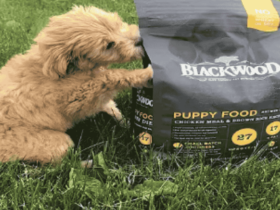
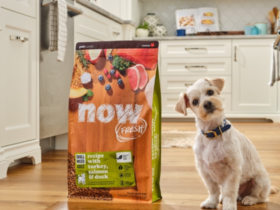
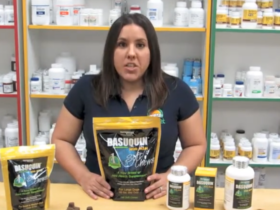
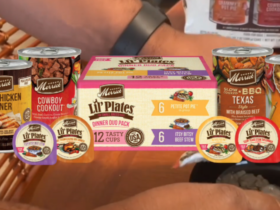
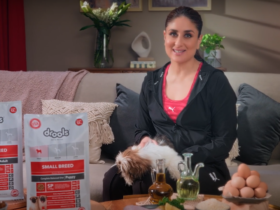
Leave a Reply